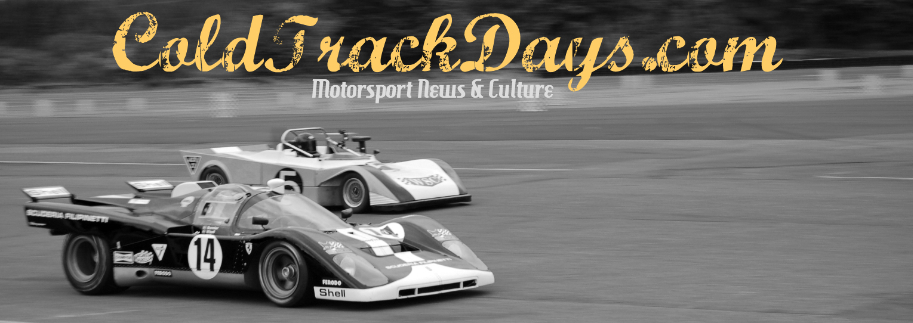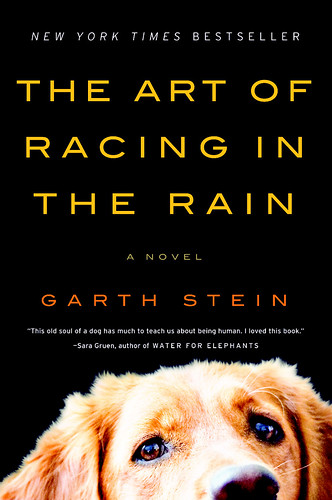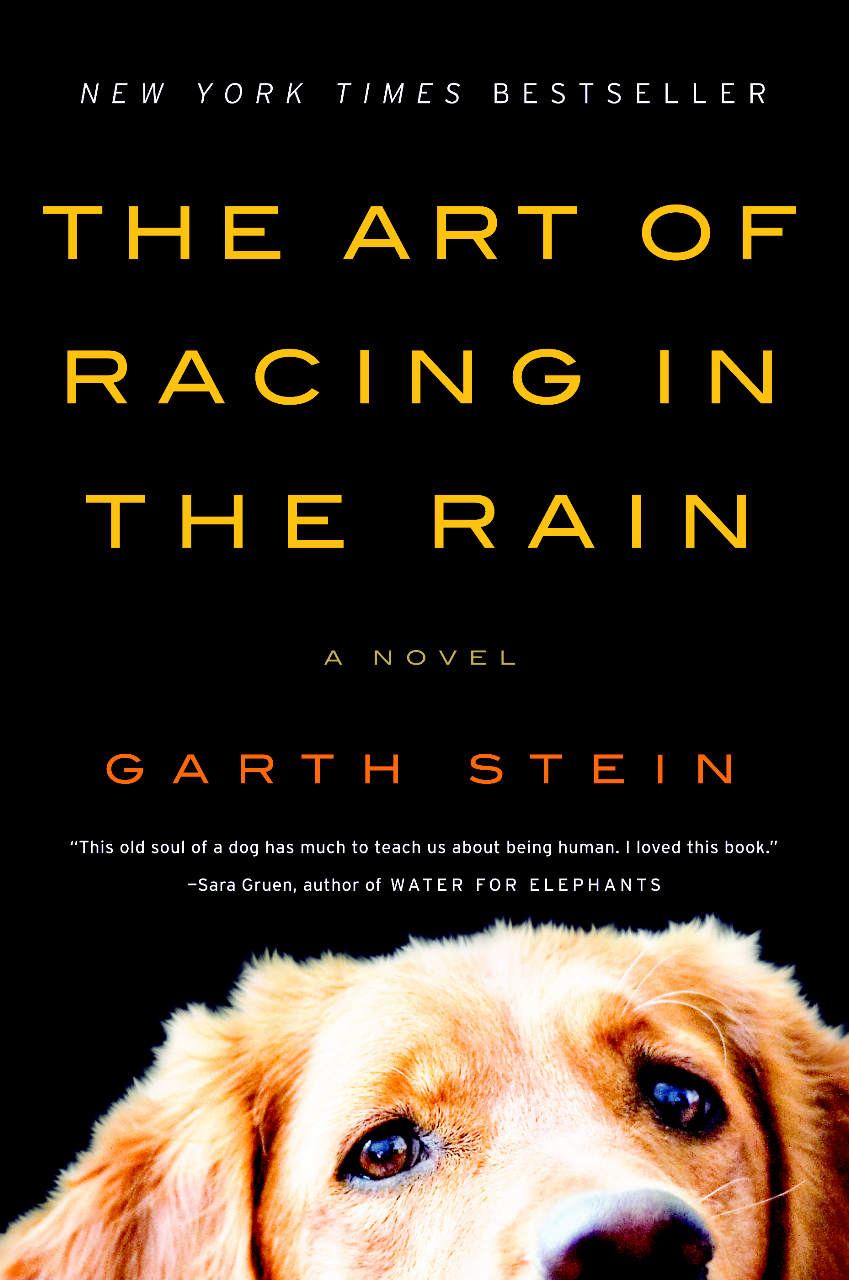 Following Robert Kubica's second place finish in last weekends Australian Grand Prix, the Renault F1 Team, eager for their first win of 2010, look ahead to Malaysia and what some expect to be a rather difficult race for the French automaker... [read more]
Following Robert Kubica's second place finish in last weekends Australian Grand Prix, the Renault F1 Team, eager for their first win of 2010, look ahead to Malaysia and what some expect to be a rather difficult race for the French automaker... [read more]
Robert Kubica:
Robert, after the disappointment of Bahrain you must have been delighted to finish second in Melbourne?
"It was pretty much the perfect race and a great result for the whole team. My start was good and I took things quite easy in the first corner to avoid a repeat of what happened in Bahrain. Then I made up some positions with the early pit stop and I have to say a big thank you to my mechanics for the great job they did in the pits. The rest of the race was all about being consistent and not making mistakes, which was tough with the changing track conditions and the degradation of the soft tyres. I had to do 50 laps on the soft compound tyres and it wasn’t easy to keep the quicker cars behind me."
From the outside it was an action-packed race. How did it feel from the cockpit?
"For me it was actually quite a straightforward race because after my pit stop I simply had to concentrate on being consistent and looking after the tyres. I had some good battles with Hamilton and Massa, but I think most of the overtaking and accidents happened behind me."
How do you feel the R30 is evolving with the new updates?
"It’s still difficult to judge because Albert Park is a completely different circuit to Bahrain. There are certainly some positive aspects of the car that I’m pleased with because the car has good consistency and is easy to drive. However, there are still areas where we are missing performance and where we need to improve if we are to get on terms with the top teams. Melbourne was not a normal race because of the changeable weather and, although it’s great to finish on the podium, we need to remain realistic about our level of performance. These unusual races are not that common and we need to work hard to make sure we can fight for the podium in every kind of race."
Looking ahead to Sepang, it’s a circuit with low, medium and high speed corners. How do you think the R30 will perform?
"Again it’s difficult to predict because we have only had two races. I don’t think it will be an ideal circuit for us, but on the other hand we discovered in Australia that the car performs better in warmer conditions and the heat in Malaysia might help us. It’s a demanding track because there are lots of different corners and it’s so wide that it gives you the confidence to really push and find the limits. Recently the high-speed corners haven’t been too challenging, but I think they will be more demanding this year with the heavier fuel loads. There’s also a high risk of rain storms, and with the race starting late on Sunday afternoon, we could have another wet race." Vitaly Petrov:
Vitaly Petrov:
Vitaly, your race in Melbourne ended early, but what did you think of your first F1 street race?
"I liked the circuit and it was quite bumpy and challenging, just like most street circuits. The wet weather also made it interesting and I really enjoyed the first few laps of the race in the damp. I was a shame to retire so early because I think I could have challenged for points in the race. Although I’m disappointed, I still take a lot of positives from the weekend because it’s clear that we have a competitive car with a lot of potential, and my aim to get the maximum from it in Malaysia."
Are you finding it easier to work with the team and set the car up?
"F1 is such a steep learning curve, but I feel like I’m improving each time I get in the car. After two races I now have more experience and a better understanding of how to work with the team to improve the car. This is something where I will get better throughout the season because it’s a big difference compared to GP2."
How is the balance of the R30? What do you feel are the strengths of the car at the moment?
"The car is generally well balanced, consistent and stable in the corners, which makes it an easy car to drive, but we still need more overall downforce to get closer to the front. There will be some more aero updates on the car in Malaysia, which should give us a bit more performance."
What are your expectations for Sepang?
"It’s a track I know already from GP2 so I won’t have to spend time learning the circuit on Friday, which means I can concentrate more on finding a good set-up and evaluating the tyres. I really hope I can finish the race, which has to be my target because it’s important for me to get more miles in the car and experience a full race distance. Robert’s result in Melbourne has shown the car has potential and hopefully I can score my first points soon."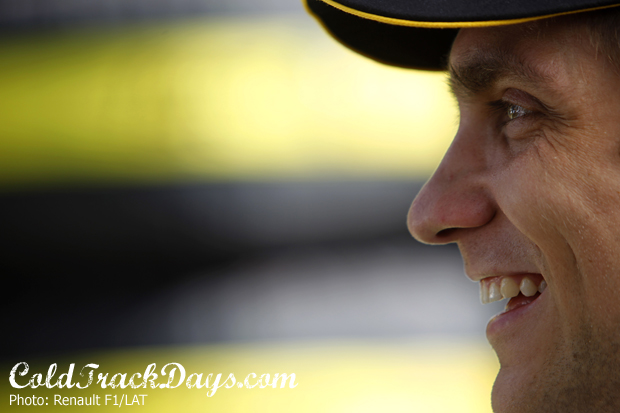 Steve Nielsen:
Steve Nielsen:
Steve, Robert scored Renault’s first podium of the year in Melbourne - just what the team needed to kickstart its season…
"It was a super result and to be honest it was quite unexpected considering where we qualified. There’s no denying there was a slice of luck involved, but I’m happy to take this result after the bad luck we had at the start of the race in Bahrain. It’s a great reward for the whole team who have put in long hours at the track and back at the factory."
It was a very busy race – how tough was it to make the right calls from the pit wall?
"The big decision we had to make was when to change to dry tyres, but that was made easier by Button, who was the first to switch from the intermediates. We kept an eye on his times and when he went quickest in sector two we knew it was the time to pit our cars – as most of the teams did. After that the race was all about Robert holding off the quicker cars and looking after his tyres, which he did brilliantly."
How concerned were you about the tyres lasting on Robert’s car?
"Before the race I never would have thought that the option tyre could perform so well over 50 laps, but the way the race unfolded meant that we had no choice but to try and make them last the distance. If we had pitted for fresh tyres, we would have dropped a long way down the field."
Vitaly had an early exit – how did you assess his performance over the weekend?
"He performed well all weekend and had another great start to the race, but it’s just a shame that his race was cut short. Hopefully in Malaysia he can finish the race, and if he does he’s definitely quick enough to finish in the points."
What was the drivers’ feedback to the updates the team brought to Melbourne?
"Overall the feedback was positive: they gave us the performance we expected and confirmed the numbers predicted back at the factory. Both Robert and Vitaly feel the car is going in the right direction, although the cooler conditions in Melbourne certainly impacted on the performance of the car. The whole team did a tremendous job to get these updates on the car and we need to keep our heads down so that we can continue bringing new parts to every race."
Will there be more upgrades on the R30 in Malaysia this weekend?
"Yes, we’ve got more aero parts going on the car in Sepang, and more parts for the next few races after that, so hopefully the car will continue improving with each race."
The mechanics have been working long hours at the last two races. How is team morale after all their recent efforts?
"We always work long hours at the start of the season in order to get as much performance on the car as possible, so it’s something that we’re used to. It’s never nice to work all day and all night, as we did in Bahrain, but the guys never complain and they always get the job done. It’s a shame that we didn’t get the result we deserved in Bahrain, but the result in Melbourne has given everybody a boost."
What challenges are posed by back-to-back races on different continents?
"It’s probably the fact that we have to pack up in Australia and be fully installed in Malaysia by Wednesday afternoon. Most people don’t realise that we still have around ten hours’ work ahead of us when the flag drops at the end of the race. In Australia the race was late in the afternoon, finishing around 6:30pm, which meant the guys didn’t finishing packing up until 4am on Monday morning. After a few hours sleep they were on a flight to Malaysia because they need to be back to work on Tuesday setting up in Sepang. So the biggest challenge is the intense workload over these few days – we’re either working or sleeping."
And what about the freight? When will that arrive in Malaysia?
"Fortunately FOM take care of shipping the freight for all the teams. The cars and equipment should be with us in Malaysia by midday Tuesday."
How tough is it to work in the hot and humid conditions in Malaysia?
"It’s very challenging and it’s fair to say that everybody’s work rate reduces slightly because you have to pace yourself. The most important thing for the mechanics is to remember to keep drinking fluids to avoid the risk of dehydration because the heat can really build up in the garage. We will get through twice as many bottles of water as we would at a typical European race and we also take a lot of special rehydration drinks. Every year somebody usually forgets to drink enough and they feel a bit faint, so I’ll remind everyone to drink something every half hour."
What do you think of the circuit and facilities in Malaysia?
"We’ve been racing there since 1999 and, although the facilities may look a bit dated compared with some of the newer circuits, they are still of a very high standard. As a team we have enjoyed some good races there, including a one-two in 2006, so it’s somewhere we return to with fond memories. It’s also a track that produces good racing and there are some decent overtaking opportunities. The climate means there’s a good chance of heavy rain showers, which may only last for a few seconds, but completely soak the circuit. It’s another factor we have to take into consideration and it has created some exciting races in the past." Robert Kubica talks us through the challenge of Sepang:
Robert Kubica talks us through the challenge of Sepang:
Sepang is a unique track with a mix of corners: some are seriously quick, but others are slow. The track has a bit of everything, which is why it demands a lot from the car.
The start of the lap is quite low speed and although turns one and two look easy on the circuit map, they are really tricky because the track undulates and it’s hard to get on the power early on the exit of two. The track is wide though, and if you are fighting with another car you can try different lines through the corners to find an advantage.
The middle part of the lap is the section I enjoy the most because it has the high-speed corners, including turns five and six, where you feel the biggest g-forces. Then you’re into turns 7 and 8, which are like a double-apex corner, but you need to look out for a small bump in the middle of the corners, which can unsettle the car.
The lap ends with a really long straight and a heavy braking zone. It’s probably the best overtaking opportunity because the track is so wide and you can try out lots of different lines. Turn 14 is another corner where we see different lines because your approach depends on the characteristics of your car as well as your driving style. Some cars prefer to carry more speed into the apex, but they lose out on the exit of the corner.
Overall it’s a circuit where it’s easy to find a rhythm and because it’s so wide it gives you confidence to really find the limits of the track. Recently the high-speed corners haven’t been too challenging, but I think they will be more demanding this year with the heavier fuel loads. For example, going flat out through turn five last year was easy, but this year it will be more of a challenge.
The climate in Malaysia makes it a physically tough weekend for the whole team. The first time I arrived in Malaysia I could not believe the humidity. As I walked out of the airport it was like walking straight into a sauna! You really feel the heat when you’re in the garage because the heat from the car soaks into your body. There is also a high risk of rain storms, and with the race starting late on Sunday afternoon, we could be in for another wet race.
Malaysia is a tough place to go racing. It’s hot, humid and there’s always the risk of a late afternoon thunderstorm to spice things up. The extreme climate has led the Malaysian Grand Prix to be dubbed the ‘toughest race of the year’ for the drivers who will endure cockpit temperatures above 40°C and lose around three kilos in weight. And it’s just as tough for the pit crew in their fireproof suits, boots and helmets.
“The biggest problem we have to worry about in Malaysia is overheating” says Riccardo Ceccarelli, the team’s doctor. “We’re not so worried about dehydration because when you sweat in such humid conditions, the sweat does not evaporate and it stays on your skin – which is why we always feel so damp and sweaty. However, because the sweat doesn’t evaporate, it causes the body temperature to rise, leading to overheating, which then causes a big drop in concentration levels.”
To avoid overheating and loss of performance, most F1 teams have experimented with various solutions for keeping their drivers cool. Dry ice is an old favourite and will be stuffed in the drivers’ helmets, shoes, gloves – basically anywhere they will feel a benefit. It may be a short-term fix, but every degree of cooling counts. Good ventilation of the helmet is also important because keeping the head (and brain) cool is the priority. If there’s time, Riccardo even recommends a cold shower just before the off once the car is on the grid.
The drivers should also follow doctor’s orders on their arrival in Malaysia to acclimatise to the local conditions. “It’s important to do some exercise as soon as they arrive while adjusting to the new environment,” explains Riccardo. “They also need to change their diet and eat light meals like fruits and vegetables because a heavy meal will require more digestion, which increases body temperature.”
As well as watching what they eat, the drivers will need to drink plenty of fluid over the weekend. Robert’s usual concoction includes special mineral salts, potassium, magnesium, and carbohydrate. Likewise, the cockpit drinks bottle plays an important role in keeping the driver hydrated during the race. Vitaly’s drink of choice is a sugary mix flavoured like a lemon tea – something that will taste okay no matter how hot it gets in the cockpit of the R30.
It’s thirsty work for the team, too, who must take similar precautions to ensure they can take the heat. In fact, 4000 bottles of water will be drunk over the four days in Malaysia – that’s almost double the usual amount. On top of that the team will also get through 1000 energy drinks and 1000 cans of soft drinks.
Images and Info: Renault F1
Editorial: Neil Tozer
3.31.2010
MALAYSIAN GP PREVIEW // Q&A WITH RENAULT'S F1 TEAM
INDY @ ST.PETERSBURG // WILL POWER WINS AGAIN
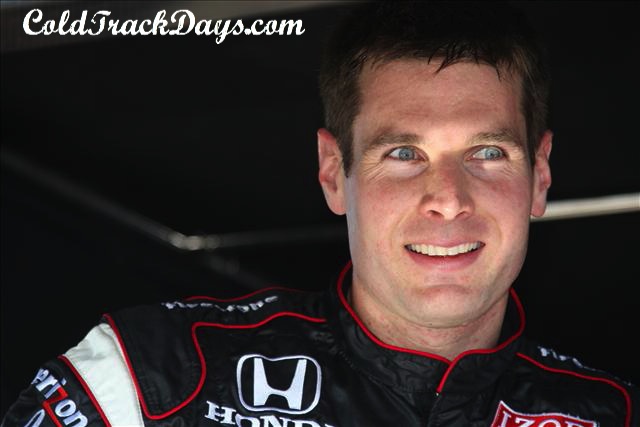 Penske driver, Will Power, has collected his second IndyCar win in as many races. Following a rain delay that saw the race moved to Monday, Power, who managed to avoid contact a number of times, went on to finish just ahead of Justin Wilson in the Dreyer & Reinbold car. Power's teammate, Ryan Briscoe, finished third followed closely by Helio Castroneves in the third Penske car.
Penske driver, Will Power, has collected his second IndyCar win in as many races. Following a rain delay that saw the race moved to Monday, Power, who managed to avoid contact a number of times, went on to finish just ahead of Justin Wilson in the Dreyer & Reinbold car. Power's teammate, Ryan Briscoe, finished third followed closely by Helio Castroneves in the third Penske car.
Follow the link for complete results and a highlight reel... [read more]
Honda Grand Prix of St.Petersburg // Race Results:
1. Will Power Penske 2h07m05.7968s
2. Justin Wilson Dreyer & Reinbold + 0.8244s
3. Ryan Briscoe Penske + 4.7290s
4. Helio Castroneves Penske + 5.1699s
5. Dario Franchitti Ganassi + 22.2172s
6. Alex Tagliani Fazzt + 29.3224s
7. Danica Patrick Andretti + 30.3360s
8. Raphael Matos de Ferran Luczo Dragon + 30.6695s
9. Graham Rahal Sarah Fisher + 30.8426s
10. Tony Kanaan Andretti + 31.3508s
11. Ryan Hunter-Reay Andretti + 31.6286s
12. Marco Andretti Andretti + 32.1703s
13. Mario Romancini Conquest + 39.8086s
14. Hideki Mutoh Newman/Haas/Lanigan + 39.9949s
15. Vitor Meira Foyt + 56.0593s
16. Simona de Silvestro HVM + 1 lap
17. EJ Viso KV + 3 laps
Retirements:
Scott Dixon Ganassi 73 laps
Mike Conway Dreyer & Reinbold 64 laps
Dan Wheldon Panther 46 laps
Mario Moraes KV 45 laps
Takuma Sato KV 21 laps
Alex Lloyd Dale Coyne 10 laps
Milka Duno Dale Coyne 7 laps
Image and Info: IndyCar Series
Editorial: Justin W. Coffey
VIDEO // ELEMENT TUNING CRASHES SUBARU STI @ VIR
We're usually not keen on posting crash footage, but this bit of onboard from VIR is a reminder that proper wing fitment is of the utmost importance. At around 104mph, the rear wing of Phil Grabow's Subaru STi detaches from the car. As he powers through the back section of Virginia International Raceway, reaching upwards of 148mph, the lack of downforce becomes evident. And while Phil walked away from this accident with only a dislocated thumb, it is a stark reminder of the dangers inherent to motorsport // [comment]
EYE CANDY // A RACE READY 8 SERIES
 This bit of Eye Candy comes to us courtesy of the Bulgogi Brothers. Possibly the first 8 series BMW I have ever seen in race trim, I am rather curious when and where this photo was taken // [comment]
This bit of Eye Candy comes to us courtesy of the Bulgogi Brothers. Possibly the first 8 series BMW I have ever seen in race trim, I am rather curious when and where this photo was taken // [comment]
VIDEO // FIRST LAPS IN THE BMW Z4 GT3
Courtesy of YORK Motorsport, enjoy nearly 11 minutes of onboard footage with Richarad Göransson in the Schubert Motorsport Z4 GT3 as he laps the infamous Nürburgring Nordschleife // [comment]
3.30.2010
REDLINE TIME ATTACK // ROUND 1 @ BUTTONWILLOW (PART TWO)
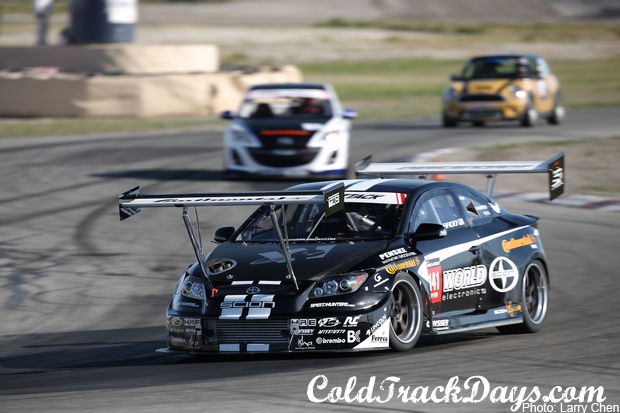 With an ability to capture not only the on-track action, but the hard work that goes into a race weekend and the friendships that have come of it, ColdTrackDays correspondent, Larry Chen, continues to impress with his coverage of the Redline Time Attack's opening round of competition at Buttonwillow Raceway... [read more]
With an ability to capture not only the on-track action, but the hard work that goes into a race weekend and the friendships that have come of it, ColdTrackDays correspondent, Larry Chen, continues to impress with his coverage of the Redline Time Attack's opening round of competition at Buttonwillow Raceway... [read more]


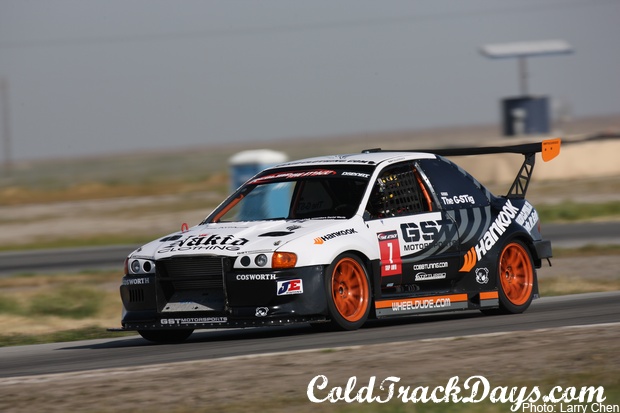





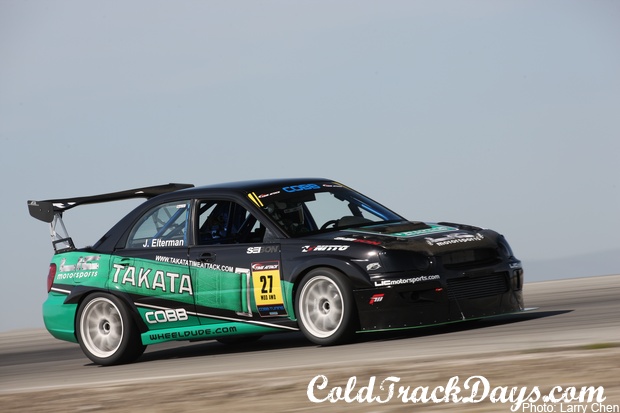

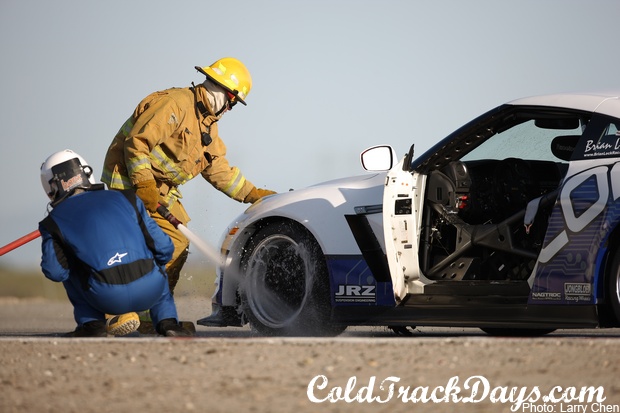

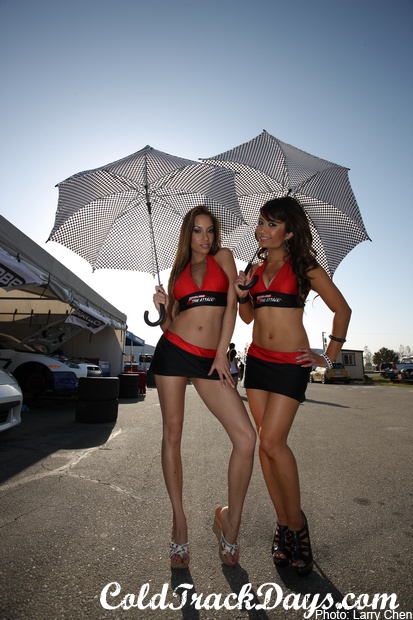

 For a look at more photos from Round 1 of the 2010 Redline Time Attack Series, click here
For a look at more photos from Round 1 of the 2010 Redline Time Attack Series, click here
Photo: Larry Chen
Editorial: Justin W. Coffey
VIDEO // A TRIBUTE TO THE BMW M3 (W/PURE ENGINE SOUNDS)
Courtesy of our friends at The Rally Channel, check out this ten minute video compilation dedicated to the BMW M3. A car that was driven by various French tarmac aces during French Rally Championship events in the 1990s, watch as BMW's four-cylinder, RWD rally monster tears up the tarmac // [comment]
REDLINE TIME ATTACK // ROUND 1 @ BUTTONWILLOW
 ColdTrackDays correspondent, Larry Chen, spent the weekend at Buttonwillow Raceway for the first round of the 2010 Redline Time Attack series. An event that saw a wide variety of cars turn out, follow the link for a look at but a few of the cars and drivers taking part in this years RTA... [read more]
ColdTrackDays correspondent, Larry Chen, spent the weekend at Buttonwillow Raceway for the first round of the 2010 Redline Time Attack series. An event that saw a wide variety of cars turn out, follow the link for a look at but a few of the cars and drivers taking part in this years RTA... [read more]

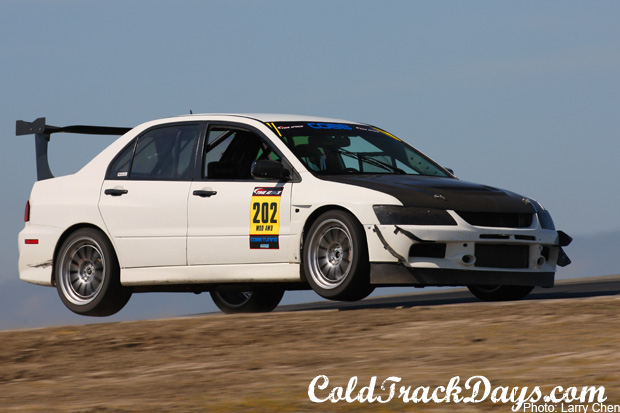





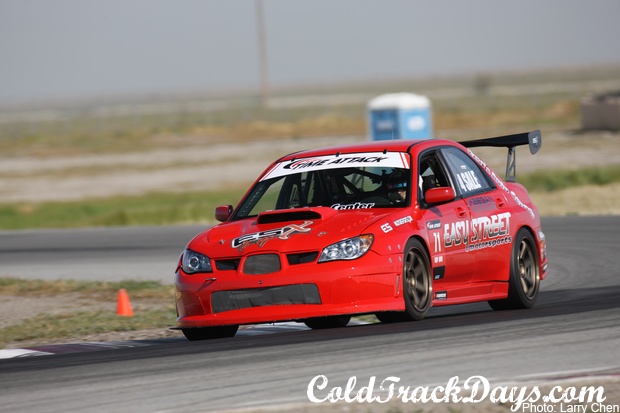
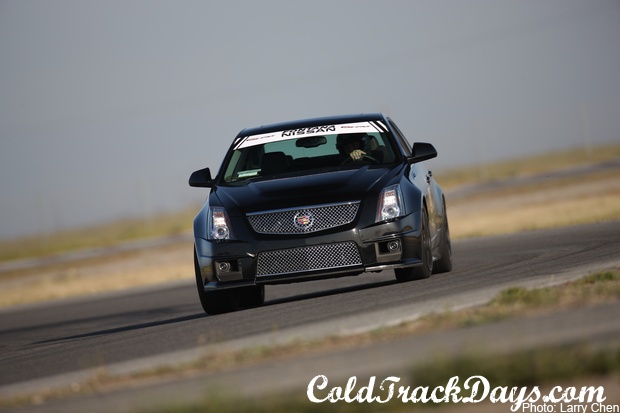


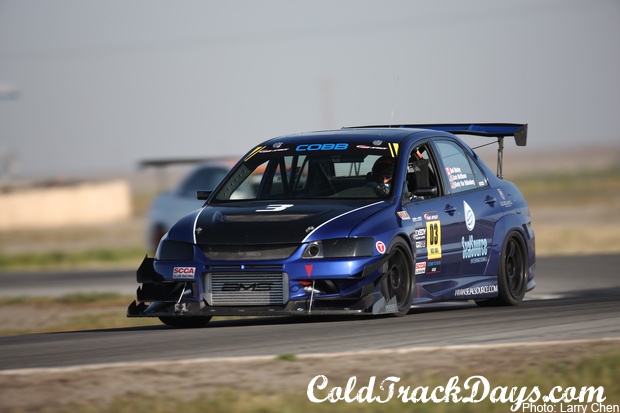

 Stay tuned for additional images from Round 1 of the 2010 Redline Time Attack!
Stay tuned for additional images from Round 1 of the 2010 Redline Time Attack!
Photo: Larry Chen
Editorial: Justin W. Coffey
VIDEO // FORSBERG'S NOS ENERGY COMMERCIAL
Last week we announced that 2009 Formula DRIFT Champion, Chris Forsberg, was working on a commercial for his primary sponsor, NOS Energy. The commercial debuted during last weekends NASCAR race and has since been released onto the internet. A proper demonstration in car control, watch as Forsberg uses his drop-top 350Z to open a bottle of NOS // [comment]
3.29.2010
EVENT // NWERS SIX HOURS OF PACIFIC RACEWAYS
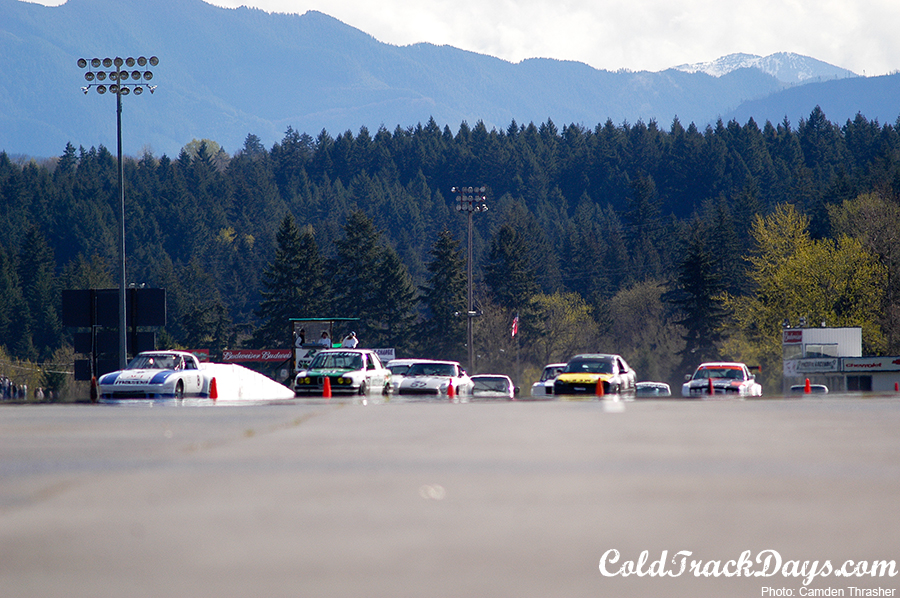 On Sunday, the Northwest Endurance Racing Series held its sixth annual 6 Hours of Pacific Raceways. Amongst those participating in this years event were a handful of professional race drivers, to include ex-IndyCar driver Dominic Dobson, Grand Am/SCCA Pro driver James Clay of BimmerWorld and our good friend and former KONI Challenge driver, Kevin York. With an 11am start time, the rather small, albeit competitive field of cars, took to the track for six straight hours of racing around the Northwests premiere facility, Pacific Raceways... [read more]
On Sunday, the Northwest Endurance Racing Series held its sixth annual 6 Hours of Pacific Raceways. Amongst those participating in this years event were a handful of professional race drivers, to include ex-IndyCar driver Dominic Dobson, Grand Am/SCCA Pro driver James Clay of BimmerWorld and our good friend and former KONI Challenge driver, Kevin York. With an 11am start time, the rather small, albeit competitive field of cars, took to the track for six straight hours of racing around the Northwests premiere facility, Pacific Raceways... [read more]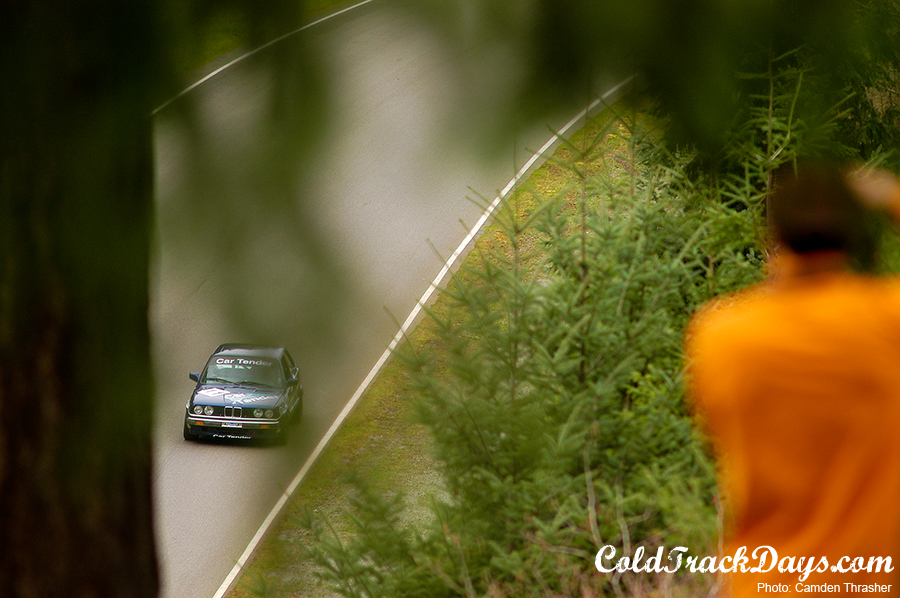


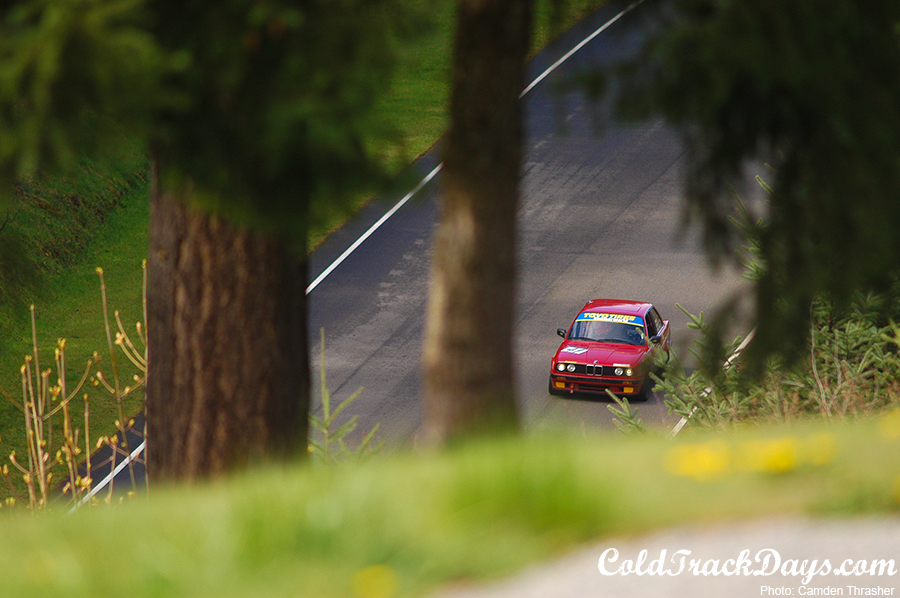

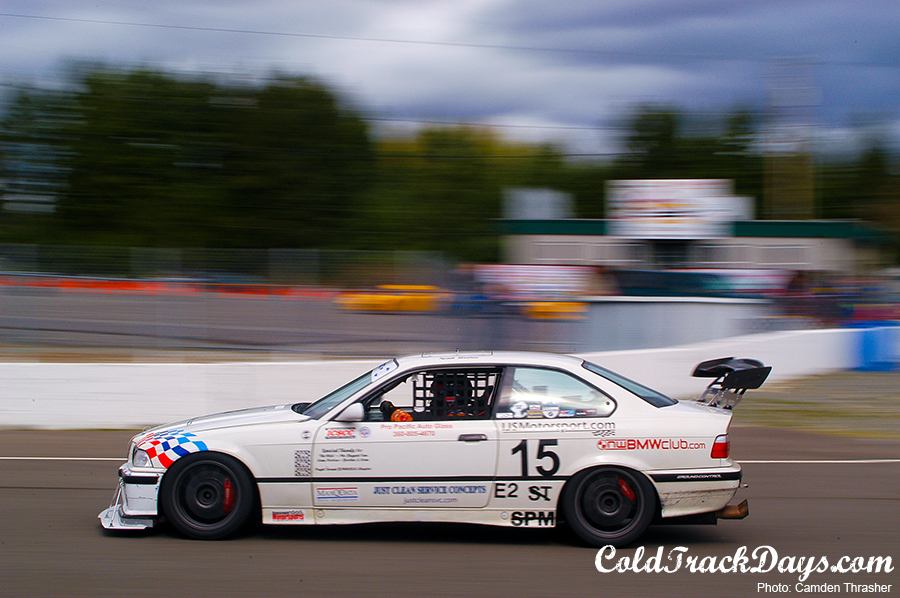

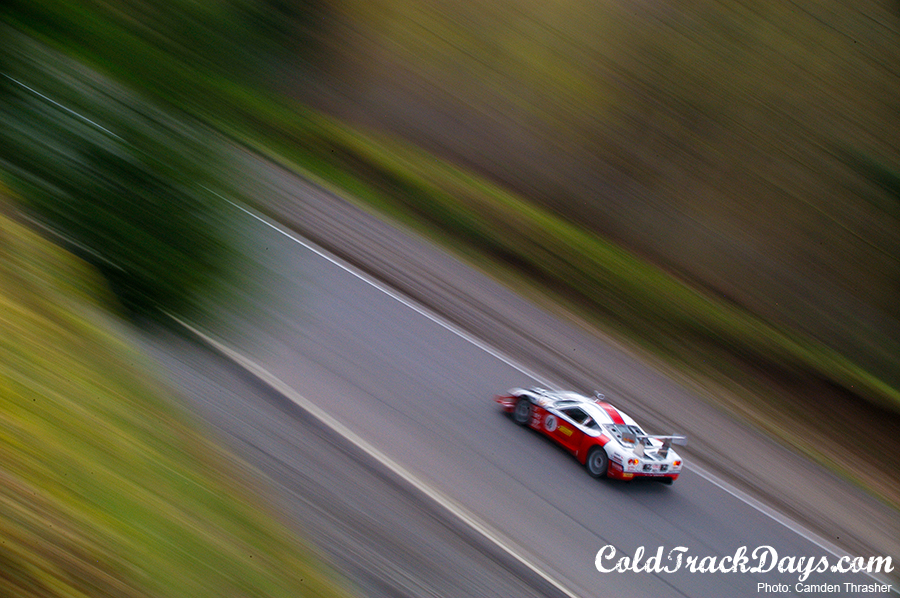
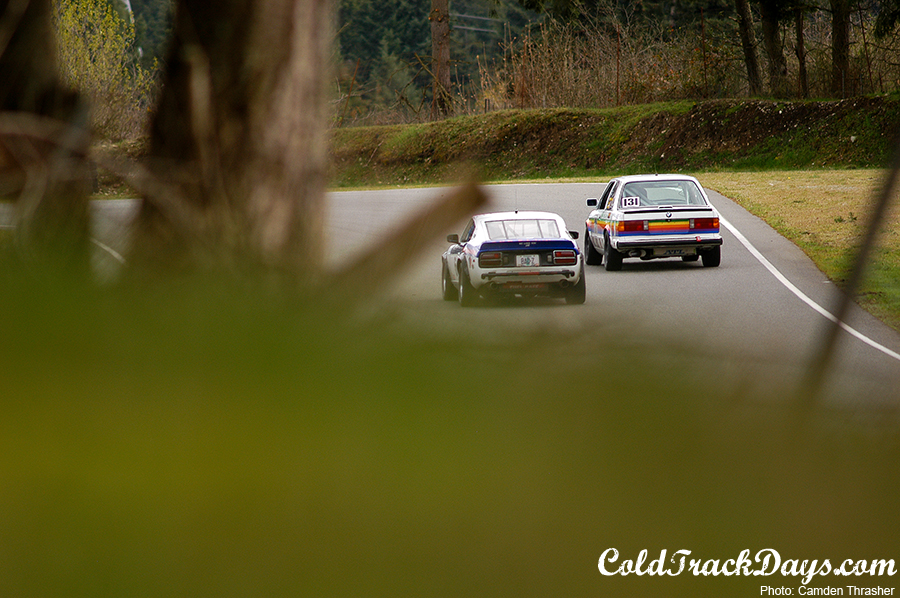
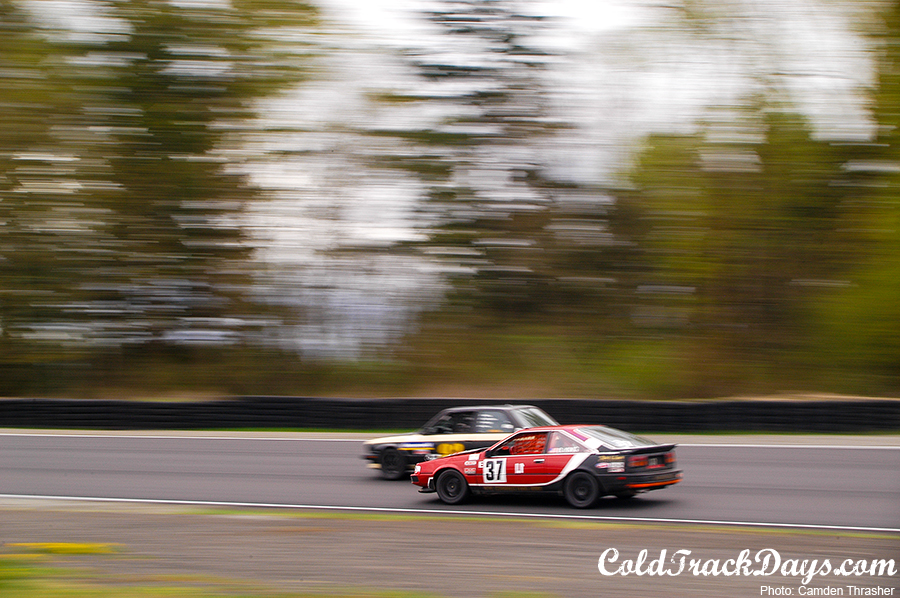
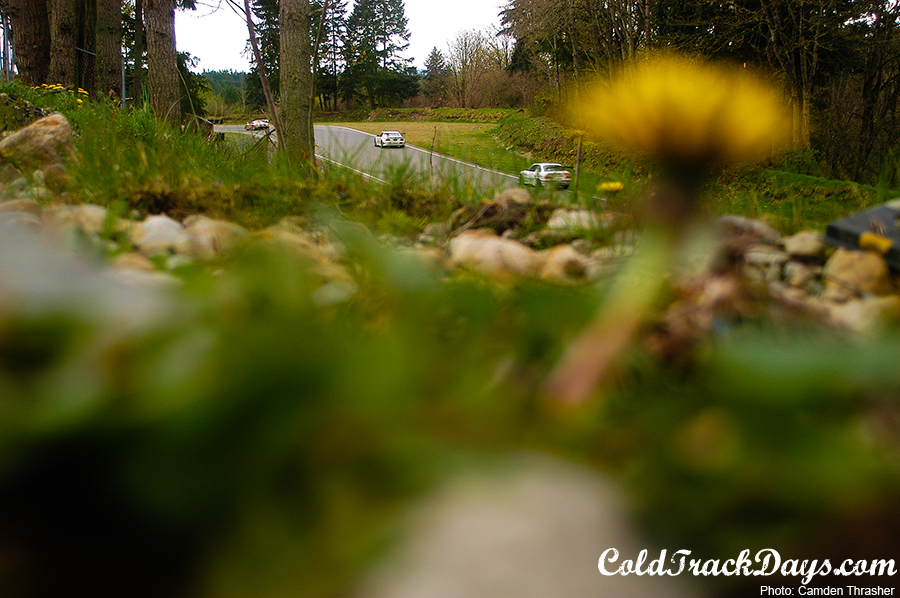
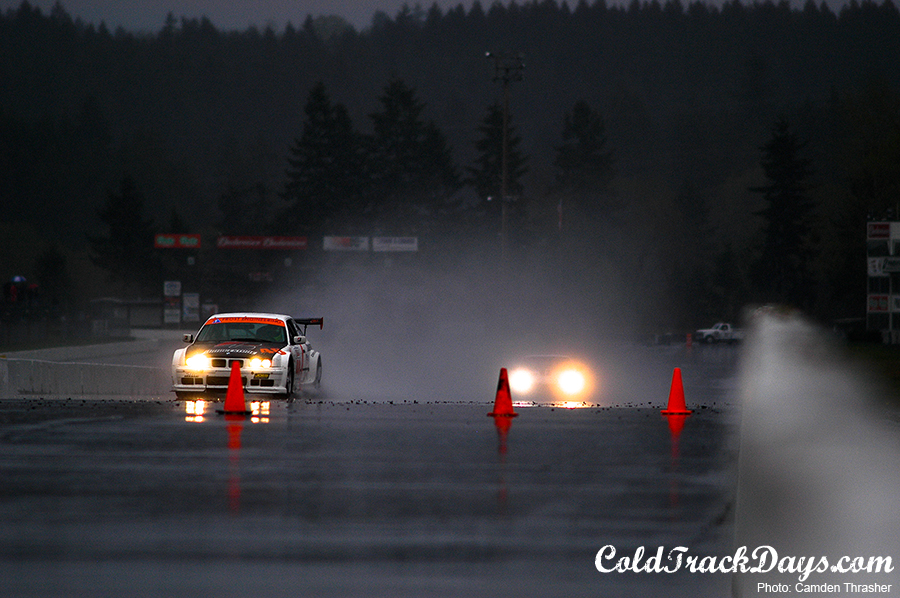
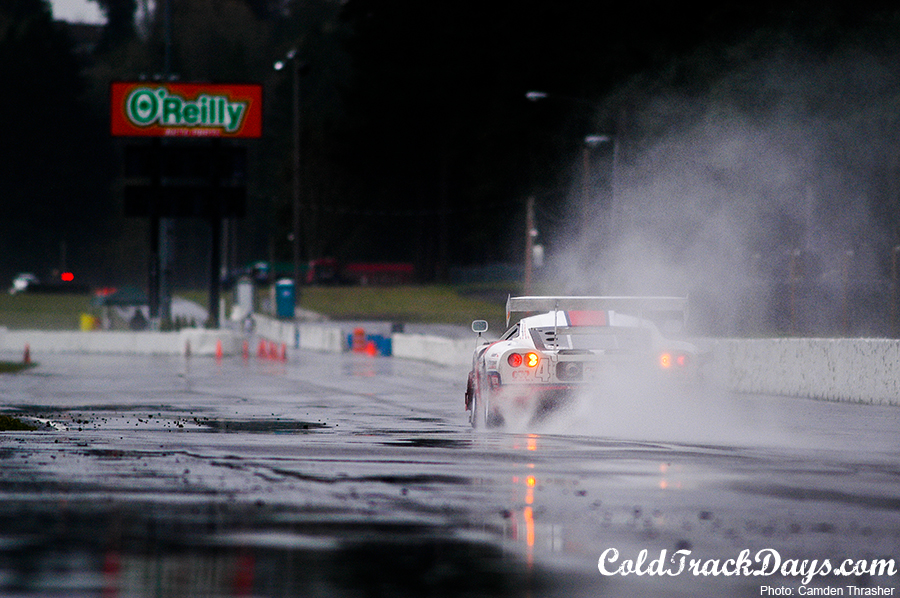
Photo: Camden Thrasher
Editorial: Justin W. Coffey
